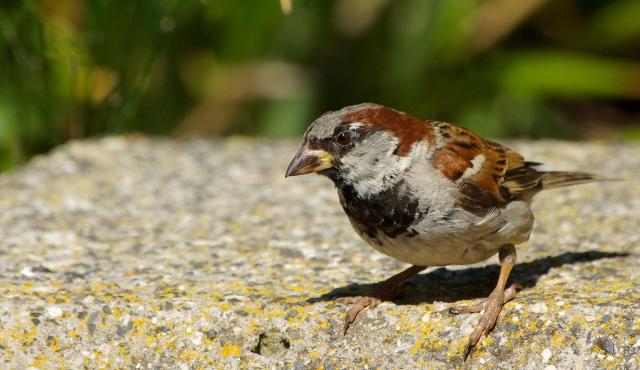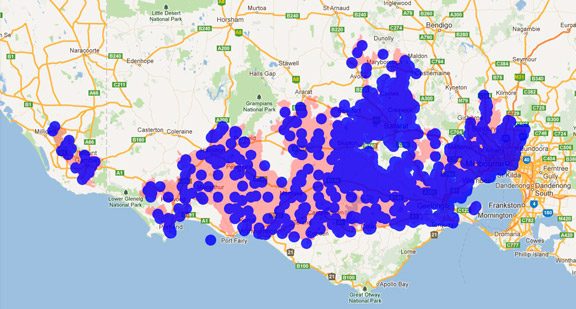A range of teacher professional learning programs will be developed to accompany the Biodiversity of the Western Volcanic Plains online outreach...

House Sparrow
Passer domesticus
Breeds spring and summer. Builds a bulky domed nest in buildings, tree hollows or shrubs. Pairs mate for life. The female incubates the eggs but both male and female build the nest and care for the young.
| Details | Description |
| Type | Bird |
| Group | Finches and Sparrows |
| Identifying Characteristics | |
| Distinctive Markings | The male has a distinctive grey crown, black face and throat which extends to the chest in the breeding season. |
| Diet | Omnivore, feeding on a wide range of food including invertebrates, seeds, flower buds, berries and food scraps. |
| Habitat | Parks, cities, towns, farmlands, crop growing areas. |
| Native Status | Introduced |
| Sounds | Persistent "cheep" or harsh chattering. |
| Taxonomy | |
| Phylum | Chordata |
| Class | Aves |
| Order | Passeriformes |
| Family | Passeridae |
| Genus | Passer |
| Species | domesticus |

Distribution maps indicate current and historic locations where species have been sighted.
Source: Atlas of Living Australia
| Conservation Status | |
| DEPI Advisory List | Not listed |
| FFG Act | Not listed |
| EPBC Act | Not listed |
The conservation status of species is listed within Victoria and Australia.
The Department of Environment and Primary Industry (DEPI) Advisory List consists of non-statutory advisory lists of rare or threatened flora and fauna within Victoria.
The Flora and Fauna Guarantee Act 1988 (FFG Act) lists threatened species in Victoria. Under the Act, an Action Statement is produced for each listed species.
The Environment Protection and Biodiversity Conservation Act 1999 (EPBC Act) is the Australian Government’s key piece of environmental legislation, listing nationally threatened native species and ecological communities.



